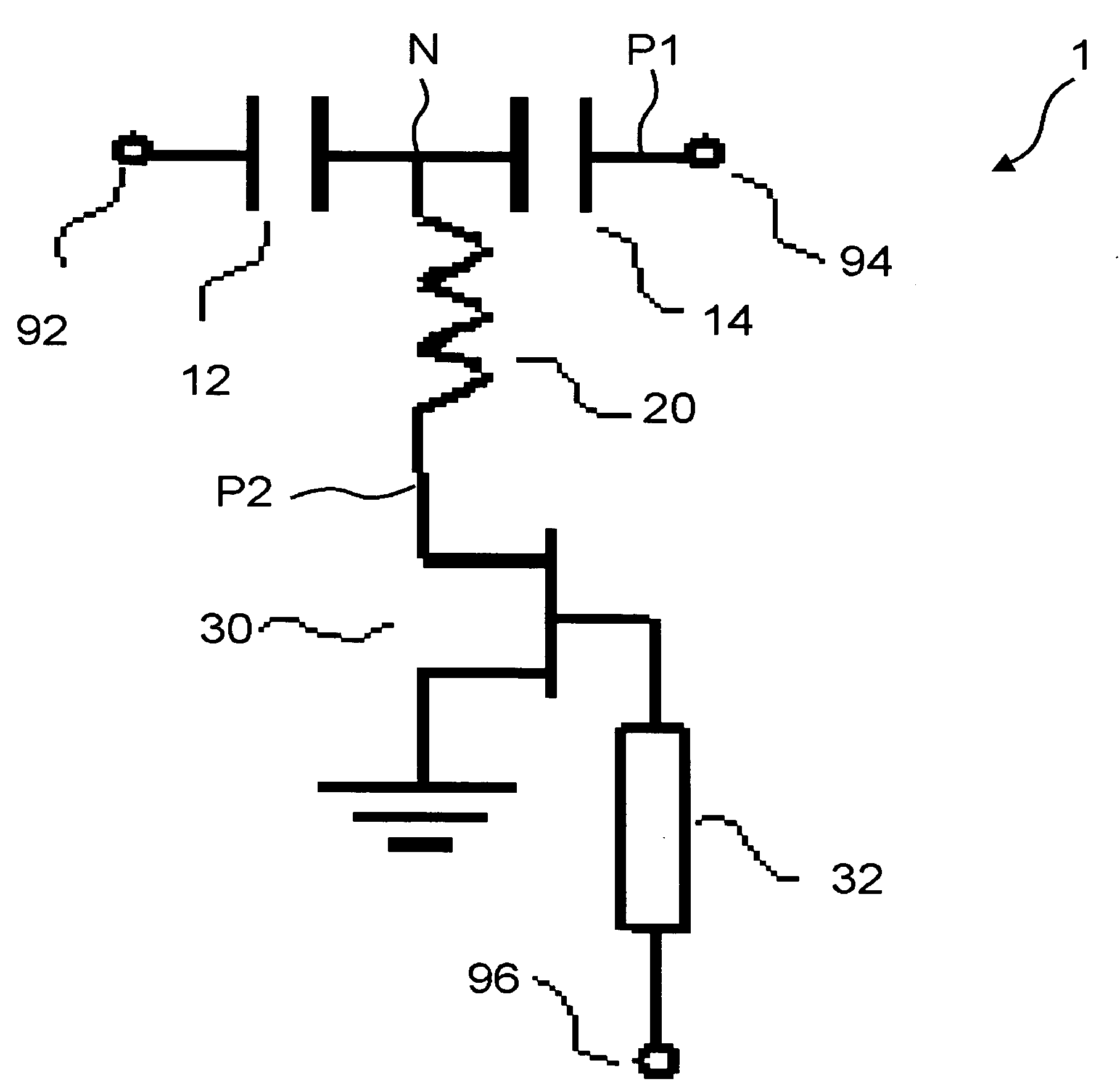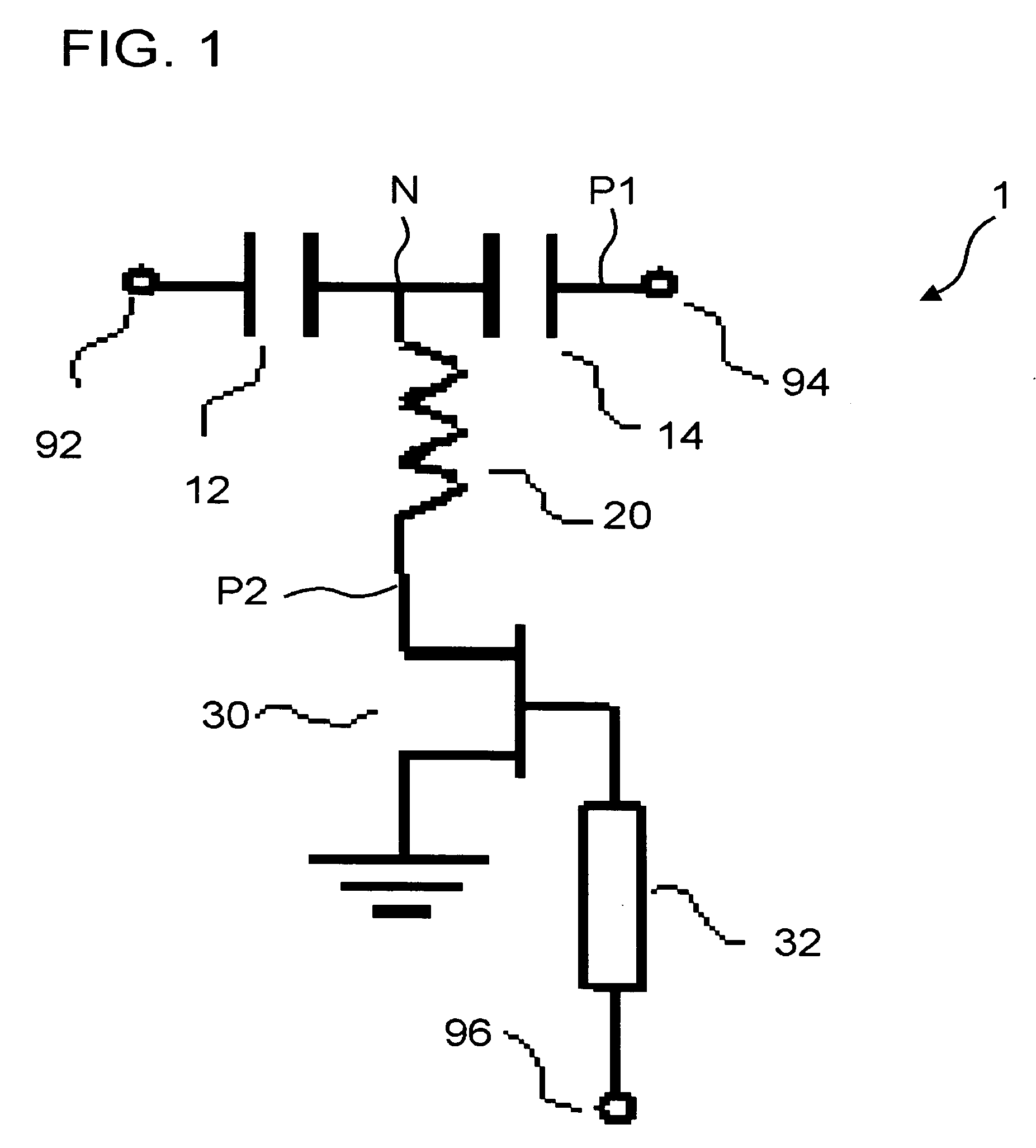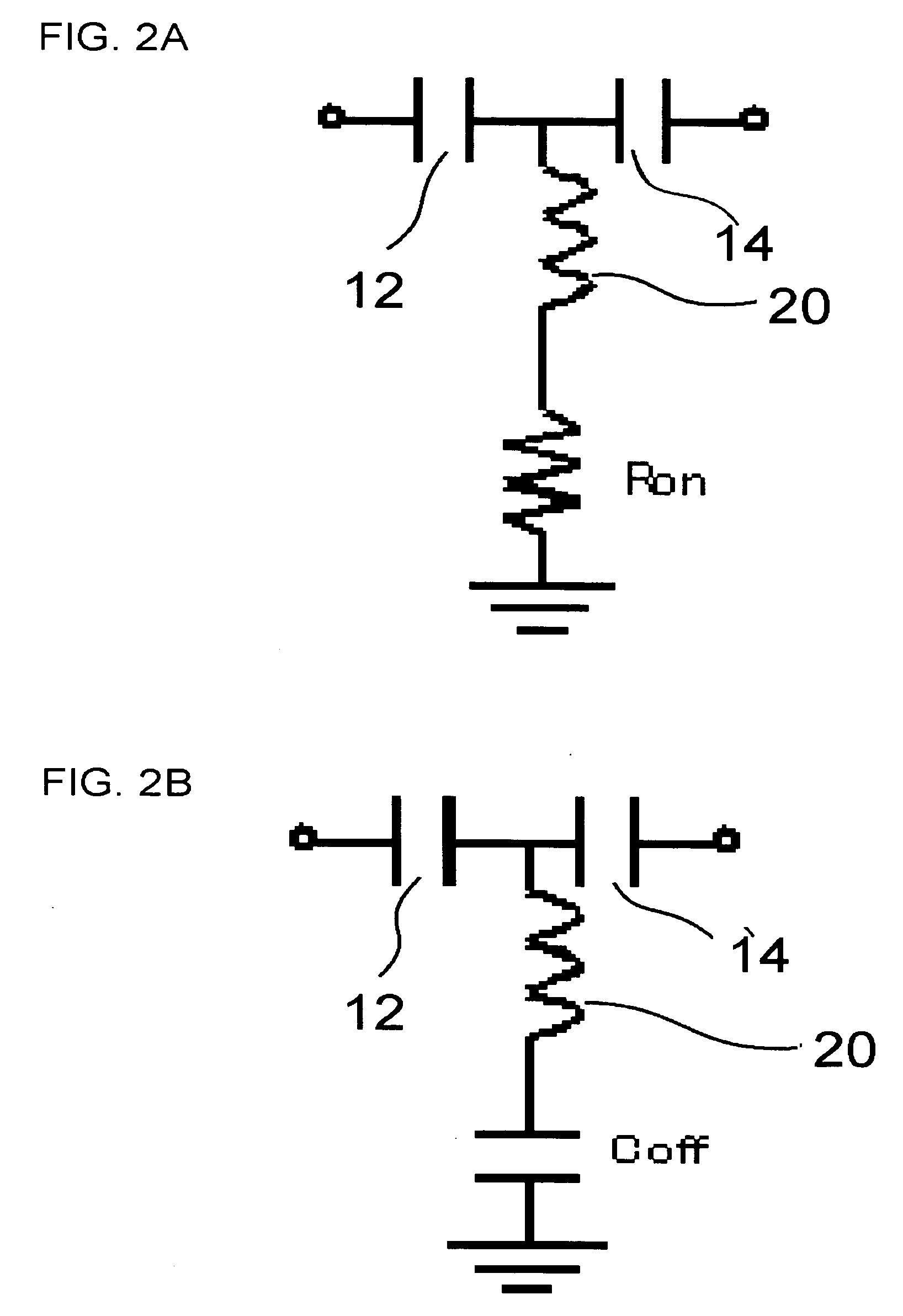Switch circuit
a switch circuit and circuit technology, applied in the field of switch circuits, can solve the problems of complicated wiring arrangement of bias lines, disadvantages in reducing costs, and disadvantages that are particularly apparent, and achieve high isolation characteristics, improve isolation, and improve isolation performance.
- Summary
- Abstract
- Description
- Claims
- Application Information
AI Technical Summary
Benefits of technology
Problems solved by technology
Method used
Image
Examples
first embodiment
[0039]FIG. 1 is a circuit diagram of a switch circuit according to the first embodiment of the present invention. The switch circuit 1 includes a unit circuit having capacitors 12, 14, an inductor 20, and a FET 30 (switching element), applicable to a system for a microwave band and a millimeter-wave band, for example. The switch circuit 1 is a single pole single throw (hereinafter, SPST) switch that includes just one of such unit circuit.
[0040] The capacitors 12, 14 are provided in a path P1 (first path) connecting I / O terminals 92, 94. The capacitors 12, 14 are serially connected to each other. To the path P1, a path P2 (second path) is connected. A connection point N of the path P1 and the path P2 is located between the capacitor 12 and the capacitor 14.
[0041] The path P2 includes the inductor 20 and the FET 30, which are serially connected to each other. To be more detailed, an end of the inductor 20 is connected to the connection point N, and the drain (or source) of the FET 3...
second embodiment
[0051]FIG. 4 is a circuit diagram of a switch circuit according to the second embodiment of the present invention. The switch circuit 2 is a SPST switch that includes a unit circuit including the capacitors 12, 14, a transmission line 22 (inductor), and the FET 30. The path P1 includes transmission lines 42, 44 in addition to the capacitors 12, 14. The capacitor 12, the transmission line 42, the transmission line 44 and the capacitor 14 are serially connected to one another in this sequence.
[0052] The path P2 includes the transmission line 22 and the FET 30 serially connected to each other. To be more detailed, an end of the transmission line 22 is connected to the connection point N, and the drain (or source) of the FET 30 is connected to the other end of the transmission line 22. The source (or drain) of the FET 30 is grounded. The gate of the FET 30 is connected to the control terminal 96 via the transmission line 32. The transmission line 22 acts as an inductor. In other words,...
third embodiment
[0057]FIG. 6 is a circuit diagram of a switch circuit according to the third embodiment of the present invention. The switch circuit 3 is a SPST switch that includes a unit circuit including a capacitor 16, inductors 20a, 20b, and the FETs 30a, 30b.
[0058] In this embodiment, the unit circuit includes two paths P2a, P2b. The two paths P2a, P2b are respectively connected to the path P1 at each end of the capacitor 16. The path P2a includes the inductor 20a and the FET 30a serially connected to each other. To be more detailed, the drain (or source) of the FET 30a is connected to an end of the inductor 20a, and the source (or drain) is grounded. Likewise, the path P2b includes the inductor 20b and the FET 30b serially connected to each other. To be more detailed, the drain (or source) of the FET 30b is connected to an end of the inductor 20b, and the source (or drain) is grounded. To the gate of the FETs 30a, 30b, the control terminal 96 is commonly connected via the transmission line ...
PUM
 Login to View More
Login to View More Abstract
Description
Claims
Application Information
 Login to View More
Login to View More - R&D
- Intellectual Property
- Life Sciences
- Materials
- Tech Scout
- Unparalleled Data Quality
- Higher Quality Content
- 60% Fewer Hallucinations
Browse by: Latest US Patents, China's latest patents, Technical Efficacy Thesaurus, Application Domain, Technology Topic, Popular Technical Reports.
© 2025 PatSnap. All rights reserved.Legal|Privacy policy|Modern Slavery Act Transparency Statement|Sitemap|About US| Contact US: help@patsnap.com



